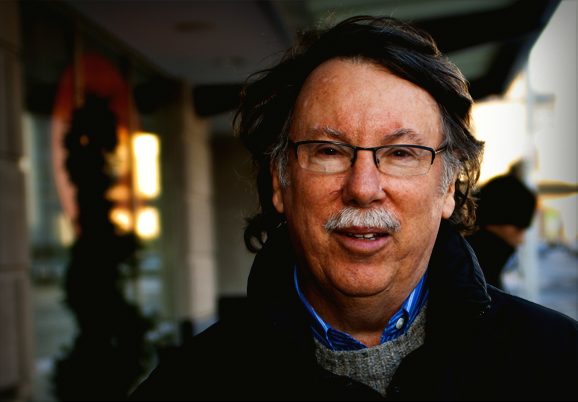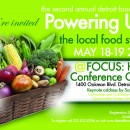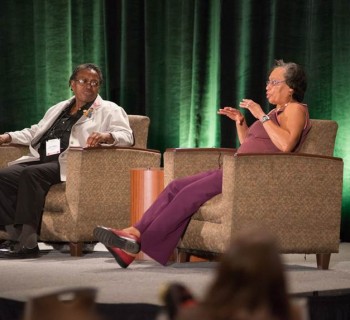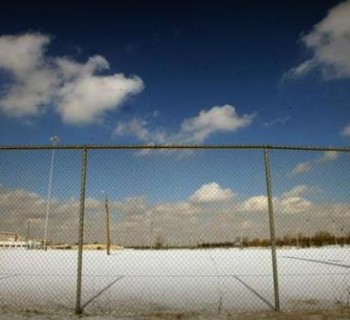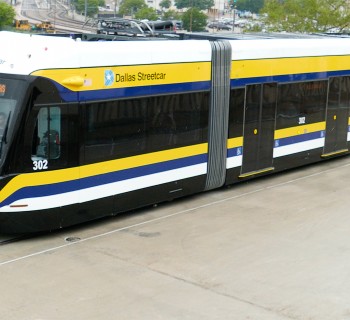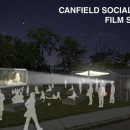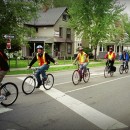DETROIT — With almost a third of its land vacant, Detroit has abundant opportunity for re-inventing how its neighborhoods are designed, and that means they could be smaller, better connected and more sustainable.
So goes the thinking behind John Gallagher’s book “Reimagining Detroit: Opportunities for Redefining an American City,” published in 2010 by Wayne State University Press.
Gallagher is a Detroit Free Press reporter who’s covered real estate and development since 1987. A few years ago he started noticing that Detroit’s re-development talk was just beginning to evolve. It wasn’t all about the next “big” development project that would mean outside investors creating large-scale housing projects, for example.
The successes that were slowly starting were more locally initiated, more aimed at environmental sustainability and better focused on Detroit’s neighborhoods.
In authoring the book, Gallagher examines various projects and possibilities for Detroit’s re-design, ranging from projects that are underway to projects that are possible to projects that might seem fanciful.
To the 700,000 people that remain in the city and the thousands more who come to work, visit and be entertained, many of the visions Gallagher discusses come with real promise for better connected communities.
He discussed the book with Mode Shift: Move Together.
MS: What’s driving opportunity in Detroit?
JG: Detroit has almost a third of the city that’s now available land and I don’t say vacant or abandoned or surplus. I say available. That’s an area the size of say Buffalo New York or Boston. Forty square miles. That’s a lot of the city.
A lot of people think of that as abandoned, worthless, surplus land that there’s nothing you can do with. But think of it as an asset. If you had 40 square miles in NYC, even if you had a square mile in NYC, that would be real estate worth a billion dollars. It has a lot of potential for a lot of things. One is simply redevelopment. There is some market demand in the city in some areas -- Southwest Detroit, Midtown, Downtown, East Riverfront -- to do traditional development. You can also use it to do all these greening strategies which include greenways through the neighborhood.
"There’s a saying the field that community gardening is more about community than gardening. It’s not just about raising food." ~John Gallagher
MS: Can you give us an example of one of the ideas that’s out there?
JG: Some students who attended a meeting on the east side did this wonderful little map showing how you can connect vacant lots to create a greenway through the neighborhood. There’s enough land so that you could really lace greenways throughout the city and hook up with the more formal ones like the Dequindre Cut and the Riverwalk.
Greening strategies, road diets so that we can create greenways and bike lanes and medians and wider sidewalks for sidewalk cafes. All of that is available to us because we’re a smaller city. People have to be a beet city not just in spite of being smaller but because of being smaller. Being smaller allows you to do things you couldn’t do when every square mile was developed.
MS: How much is actually happening now?
JG: Some of it is happening on smaller scales. We have a thousand community gardens, give or take, in the city. We have a huge number of people doing guerilla art projects. Heidelberg is the big one but there are lots and lots of other ones that are happening. The easy stuff, as they say, the low-handing fruit, that’s happening now. It’s harder to get the really big stuff.
MS: Can you give an example of that difficulty?
JG: When John Hantz proposed taking 2,000 acres of surplus land that sets up a lot of legal issues like rezoning, how you tax it, what about the rights of people do you close off streets? The bigger stuff takes more time to work. And we’ve only begun the discussion a few years ago. Before that time the answer was always you redevelop it, you wait until you find some huge development to come in and build 100 homes or 1,000 homes. It’s only recently that we’re saying this is about greening strategies, restoring the natural environment by day lighting streams, doing road diets. We’ve actually come a far way in a short time.
What we haven’t gotten to yet is the big stuff, the big interventions which are going to be necessary because the small stuff, while there’s a lot of it, it only gets you so far. If you look at all the community gardens and the art projects, it’s a fairly small percentage of the vacant land.
MS: Using community gardens as an example, how do these projects make better, healthier communities?
 JG: There’s a saying the field that community gardening is more about community than gardening. It’s not just about raising food. The people who do it, a few of them emphasize the food aspect of it. A few people emphasize that we need to raise fresh food to feed people but most people emphasize the community organizing aspect of it.
JG: There’s a saying the field that community gardening is more about community than gardening. It’s not just about raising food. The people who do it, a few of them emphasize the food aspect of it. A few people emphasize that we need to raise fresh food to feed people but most people emphasize the community organizing aspect of it.
Across the country, community gardening is used for workforce development, immigrant assimilation, sheltering battered women, teaching life skills -- like at Catherine Ferguson Academy -- as well as providing a simple community project for people to rally around. I’ve met neighbors in my neighborhood on Detroit’s east side at the community garden.
Community gardening brings people together, that’s the first and most important thing it does. The food can be important but is somewhat incidental to that.
MS: What can you say about road diets and bike lanes contributing toward the effort?
JG: We’re talking about using excess road capacity to create something like bike lanes or greenways or wider sidewalks. They’re recreational venues, they tend to be venues for economic development since people develop things along those routes.
We’re talking about creating sort of landmarks within neighborhoods so you have one big thing like the Riverwalk meets a smaller one that’s coming into it and that creates a lot of venues where people can get together.
This is all about strategies to connect people in different neighborhood within neighborhoods and connecting different neighborhoods to each other through these intervention strategies which are not just the typical build roads, build highways, build stadiums and casinos but doing some of the non-traditional stuff.
MS: How new is all this thought in Detroit?
JG: When I came to the Free Press in 1987 I was covering development which for a long time meant you were covering the big projects: the casinos, the stadiums, the Silverdome, the Book Cadillac hotel. At some point it hit me that it was more about the vacancy at this point.
The vacancy had grown to such an extent that no matter how much you built, there was always more vacancy. If you built 10 new condos in a neighborhood, you had 100 vacant lots. At some point that just sank in to me and a lot of people and we said it was time to use it in some way and the only way you can do it since there’s not enough market demand is to reinvent some new form of the city and the obvious one, which we need anyway, is the greening strategy.
So you start talking about urban agriculture, and daylighting streams and restoring the natural landscape and reforestation and putting fields of solar panels around and getting some productive use out of the land that is also healthy and of some economic benefit.
MS: Is this utopia or a viable reality?
JG: It’s a practical vision that’s going to take a long time to achieve. For one thing not everybody accepts it. Some people still would want to see traditional re-development. They say the answer to Detroit is to build 500,000 new homes and shops and factories and of course that’s probably not going to happen so I think we need to do this.
We’ve started on a small scale to do community gardens, to do bike lanes; there are plans on the table to daylight Bloody Run creek. All these things have started on small scales but the problem is the amount of available land is vast. It far outweighs what interventions we’ve done so far.
But I think everything we talk about in the books: urban agriculture, art projects, day lighting stream, road diets, that’s all been done either in Detroit or in other cities sometimes to a far greater extent than we’ve done here.
Philly has art projects that go far beyond anything we’ve done with their art projects. A lot of cities have ripped out expressway to create parks and walkable urbanism. It’s not a utopian vision, it’s practical stuff that nonetheless might be hard to do and time consuming but the book is meant to be here’s what’s happening, here’s what’s doable, here what’s been done, lets’ see if we can use some of it to reinvent Detroit.
So dear readers, IS this utopia or a viable reality? We'd like to hear your thoughts in the comments below.


